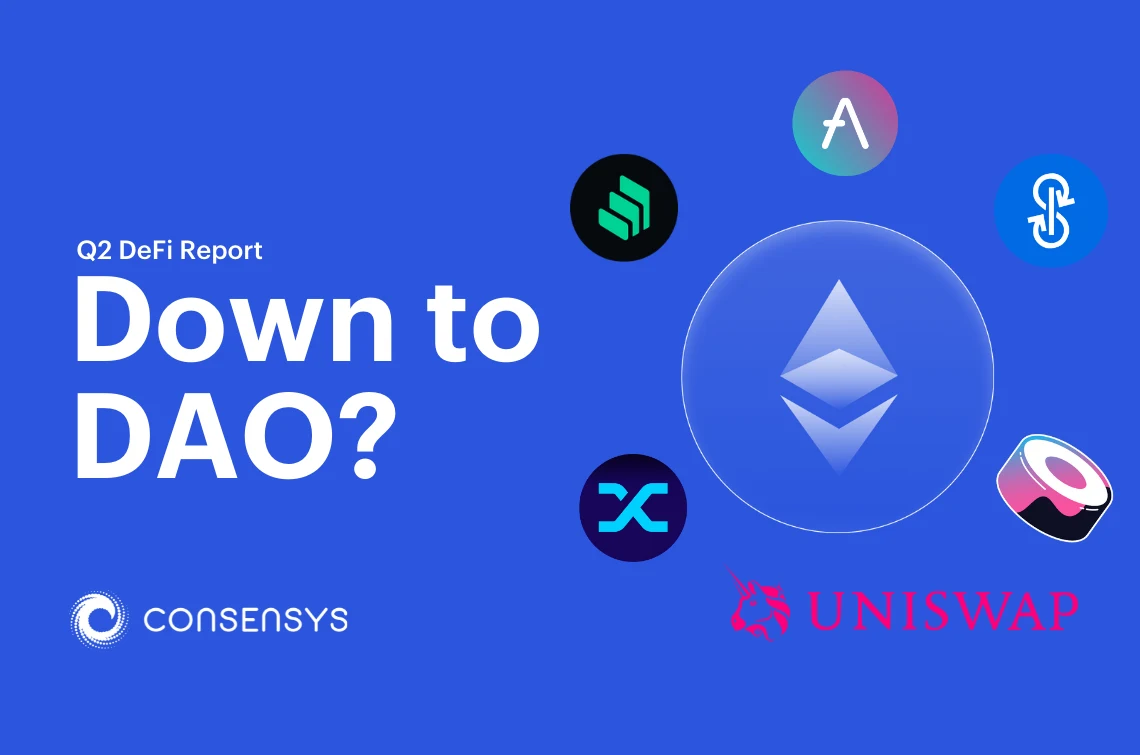Good old Joyce Carol Oates. Anyway. We posed an important question in our Q2 DeFi report: "Down to DAO?" Since then, we have been handed the answer as an act of providence. The world is definitely down to DAO.

What is a DAO?
Let's start with a gentle reminder of what a DAO is. A DAO, or decentralized autonomous organization, is essentially a very large vending machine living on the blockchain. Like a vending machine, it only does what it is programmed to do, with no possibility for human intervention. DAOs allow anyone with an idea to coordinate, pool funds, and even create tokens that represent their share within the organization.
Let us now dip our appendages of choice into the current state of DAOs.
Why are they important?
Organizations run by smart contracts (preferably reviewed by security auditors like Diligence, of course) rather than humans are less susceptible to corruption, centralization, and other human foibles. You can't corrupt a vending machine unless you hack it, change its code, or break it. Members of a DAO can vote on governance proposals and choose to add to the DAOs functionalities.
Let's take investment DAOs as an example. In traditional finance, there is very little transparency as to where and how your money is being invested. In contrast, investment DAOs like Syndicate allow members to create special interest DAOs, vote on projects worthy of investment, have more agency in their investment decisions, and eliminate the frustration of not knowing how their funds are being used.
Why did DAOs grow so much this summer?
In Q2 of this year, we witnessed a burgeoning DAO ecosystem thanks to new coordination mechanisms that deal with financial decisions as a group. From fundraising to deploying capital, this year's growth was impressive in its diversity of use cases for DAOs. This explosion of ingenuity continues to this day.
Compared to $6B in late June, nearly $14B worth of digital assets are currently held in the top 20 DAOs. DeFi aficionados are familiar with protocols such as Compound and Uniswap for borrowing, lending, and swapping tokens on Ethereum. They are also the largest DAOs both in terms of assets on their balance sheet (Uniswap with $8,418,252,541 and Compound with $1,156,960,610) and number of members.
However, there are thousands of other types of DAOs. Media organizations like Bankless and public funding entities like Gitcoin all utilize DAOs to coordinate, govern, and manage their financials. DAO membership has also quintupled since late June. There are now more than 978,000 DAO members across crypto!
The ever-evolving tooling and development ecosystem provides the necessary functions to support the growth of DAOs. Check out this beautiful infographic of the ecosystem, created by our very own Corbin Page:

Current projects include many that focus solely on token services, governance, treasury management, risk management, growth, community, operations, and development for DAOs.
Is the Future of DAOs More DAOs?
As with all technological advances worth nurturing, DAOs will continue to grow bigger, stronger, and more diverse.
As crypto projects continue to grow and distribute governance, DAOs will continue to increase in importance. Today, many DAO structures are still controlled by the founding team and a small group of investors. Not very decentralized, now is it?
To say that the world of Web3 moves fast is an understatement. To appreciate the future, one must learn from the past. Check out our Q2 DeFi report to learn about the state of DAOs a few months ago!
